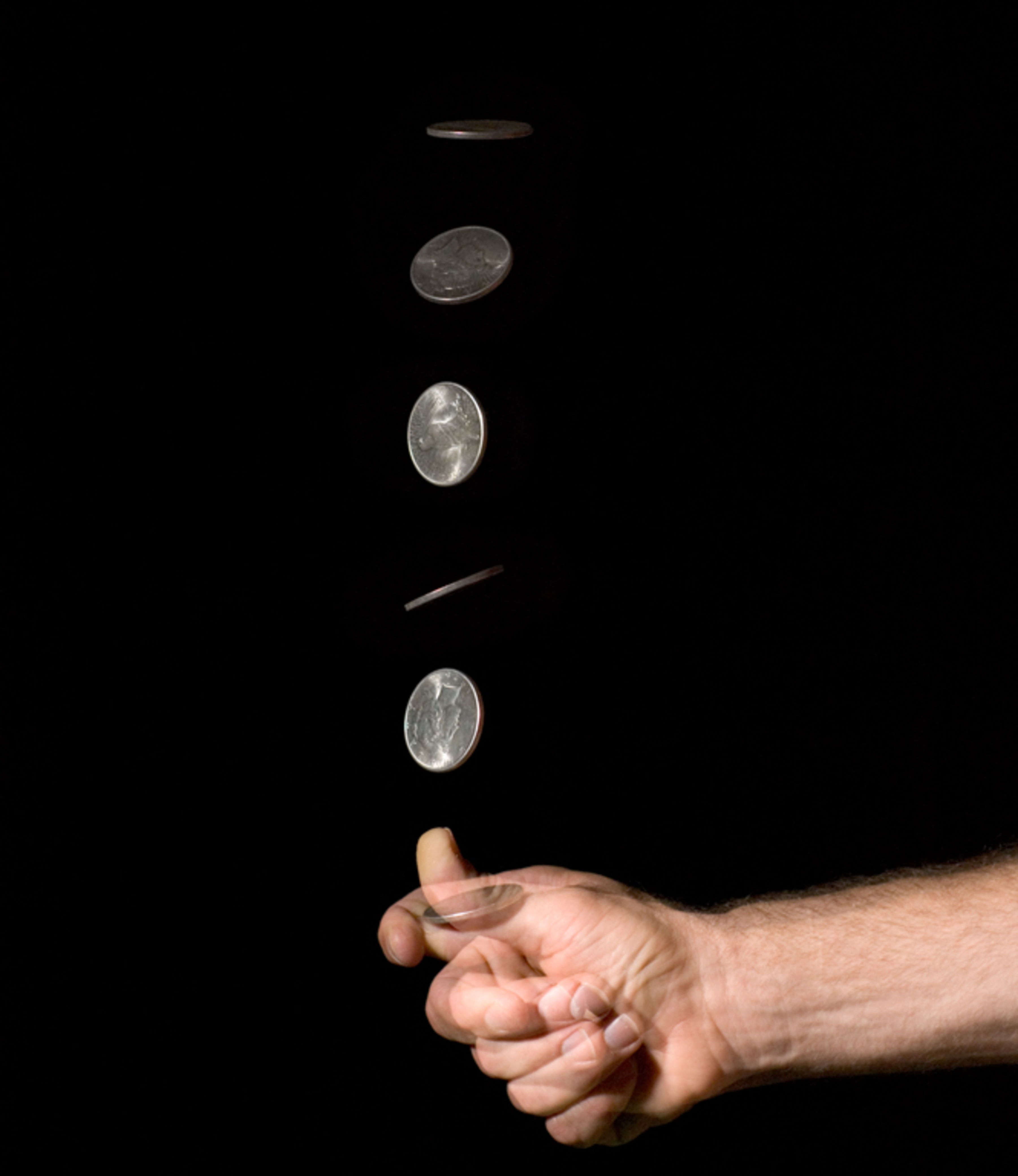Let's toss a coin!

You are pitted against
Lee Chong Wei
in a superseries final!
You are given a chance to flip the coin for the toss.
You take a coin with heads facing the sky, and
toss it with an initial velocity
and angular velocity
.
He claims tails on the toss.
He will definitely lose if
Details and Assumptions:
-
Ignore air resistance.
-
is a positive integer.
-
The coin lands at the same level it was tossed from.
-
He only loses the toss!
If you are looking for more such twisted questions, Twisted problems for JEE aspirants is for you!
This section requires Javascript.
You are seeing this because something didn't load right. We suggest you, (a) try
refreshing the page, (b) enabling javascript if it is disabled on your browser and,
finally, (c)
loading the
non-javascript version of this page
. We're sorry about the hassle.
The equation of vertical motion for the coin is y = y 0 + v t − 2 1 g t 2 .
The time the coin is in the air before it is back at its starting point is then given by
0 = v t − 2 1 g t 2 ⟹ t = g 2 v .
For LCW to lose, the coin must make n full revolutions while in the air, ensuring that it lands heads up. We thus require that ω t = 2 n π for some positive integer n . Plugging in our value for t gives us that
ω × g 2 v = 2 n π ⟹ v ω = n π g .